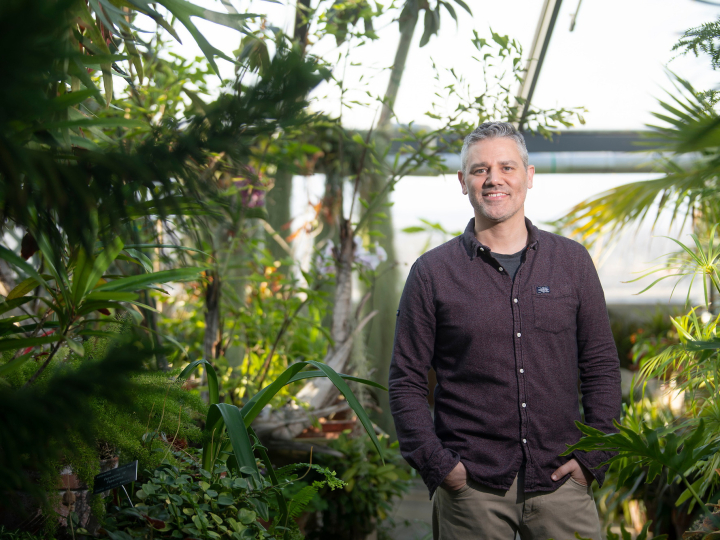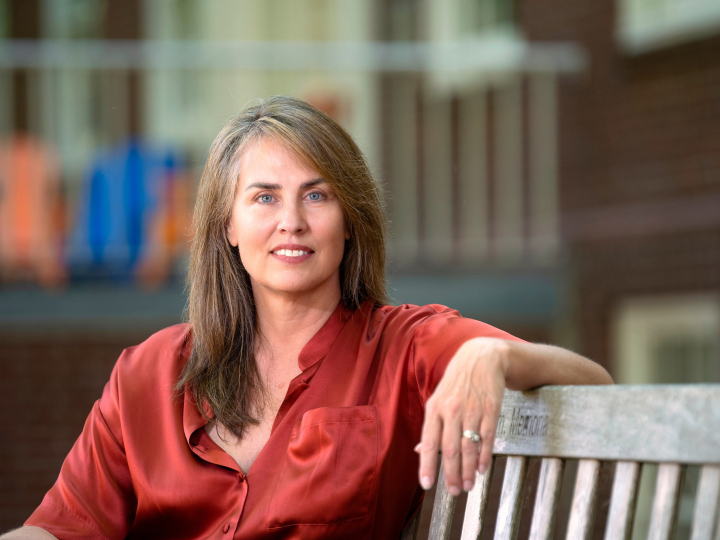New Biophysics Major Applies Physics Principles to the Living World
March 6, 2018
Cameron Williams '18 is a physics major. He examines the forces that govern the physical world. It just so happens that he's using his knowledge to study turtles.
"We're looking at different structural support elements within the shell, how varying densities and thicknesses affect the shell's maximum structural load and the biological implications that has," Williams said of his work in the biology lab of Professor Tristan Stayton. "I did all the structural support testing using finite element analysis, a tool engineers use to test bridges. We can predict where shells are going to break and how much stress will fall in certain areas."
Find Your Path
Williams is among a growing number of Bucknellians exploring the blossoming field of biophysics, which applies physics principles like Newtonian mechanics and thermodynamics to answer questions about living organisms. This fall, Bucknell will launch a new major in the field, incorporating the interdisciplinary work that Williams and others like him are already doing into a formal course of study.
"I'm on the pre-med path — I want to be an orthopedic surgeon," Williams explained. "I also came into college knowing I was really interested in physics, so I decided to integrate it with biology. When I got to Bucknell I found out there was a biophysics course, so I went and talked to the instructor, who introduced me to the whole field."
That instructor was Professor Ben Vollmayr-Lee, physics & astronomy, who helped launch the new biophysics major with fellow physics & astronomy professor JiaJia Dong. Both professors use physics to probe life science questions in their research with students and noted the diversity of applications the approach can have.
"It's a large, evolving field," Vollmayr-Lee explained. "It can be applied at the cellular level, if you're trying understand how proteins move around the cell, or you can think about how blood moves through the circulatory system, or even how DNA strands are separated when making RNA copies of a gene.
"Biologists know these things happen, but if you try to build a mathematical model and connect it with the quantitative information you collect, sometimes they don't match up. Those are areas where a physics approach can enhance understanding."
Besides being interdisciplinary by nature, the field is also enabled by big data technology that didn't exist a few decades ago, placing it at the vanguard of scientific and medical research.
"A lot of the data has just started becoming available," Dong said. "Genetic data in particular enables us to ask a whole bunch of interesting quantitative questions."
While the major is becoming more common at large institutions and graduate schools, the physics professors noted it's still rare for a university of Bucknell's size to offer it. But Bucknell is particularly well positioned to break into the field.
"The strength of this major is in joining together physics, biology and chemistry," Vollmayr-Lee said. "For a smaller liberal arts university, it's pretty challenging for people to work together at these intersections. But Bucknell has an advantage: Because we have an engineering college, our science departments are all bigger. There's a greater range of expertise and more equipment than you'd expect at a school of our size."
Med School and More
Many science majors at Bucknell, including physics majors, go on to medical school after graduation. Vollmayr-Lee and Dong noted that the major is well suited to the pre-med path, with enough room for electives to ensure students can meet demanding medical school course requirements. It can also prepare students for work in research labs, technology careers or the burgeoning profession of medical physics. Medical physicists work with doctors to manage radiation-therapy regimens and imaging equipment like MRI and CAT scan machines.
Like Williams, Liam Gibbons '21 hopes to become a doctor, but also feels drawn to physics. After taking a foundation seminar with Dong examining physics across scales of magnitude from the atomic to the cosmic, he's strongly considering the major as a way to pursue both his passion and career aspirations.
"We're all made of atoms," Gibbons said. "I find it super interesting that all of life comes from atoms and the laws of physics. I really want to study how those two work together to get us where we are today."
Gibbons and other rising sophomores will be able to declare the major next year, with the first class of majors graduating in 2020. While Williams won't be around to take part, he said Bucknell's decision to launch the major reflects the school and physics department he knows.
"Bucknell professors are really good at listening to their students, seeing where they're going and what their needs are from the curriculum," he said. "And then they adapt their curriculum and the school's learning environment toward better preparing students for success."

